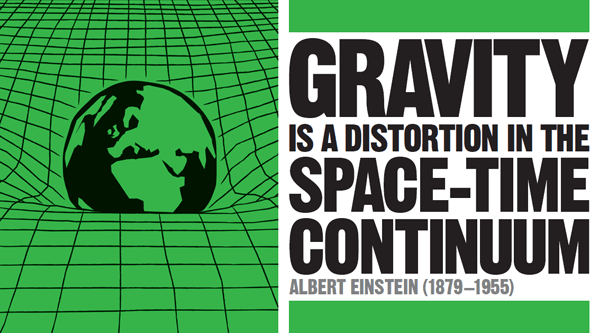
IN CONTEXT
Physics
17th century Newtonian physics provides a description of gravity and motion, which is still adequate for most everyday calculations.
1900 Max Planck first argues that light can be considered to consist of individual packets, or “quanta”, of energy.
1917 Einstein uses general relativity to produce a model of the Universe. Assuming that the Universe is static, he introduces a factor called the cosmological constant to prevent its theoretical collapse.
1971 Time dilation due to general relativity is demonstrated by flying atomic clocks around the world in jet aircraft.
In the year 1905, the German scientific journal Annalen der Physik published four papers by a single author – a little-known 26-year-old physicist called Albert Einstein, then working at the Swiss patent office. Together, these papers would lay the foundations for much of modern physics.
Einstein resolved some fundamental problems that had appeared in the scientific understanding of the physical world towards the end of the 19th century. One of the papers of 1905 transformed understanding of the nature of light and energy. A second was an elegant proof that a long-observed physical effect called Brownian motion could demonstrate the existence of atoms. A third showed the presence of an ultimate speed limit to the Universe, and considered the strange effects thereof, known as special relativity, while the fourth forever changed our understanding of the nature of matter, showing that it was interchangeable with energy. A decade later, Einstein followed up the implications of these latter papers with a theory of general relativity that presented a new and deeper understanding of gravity, space, and time.
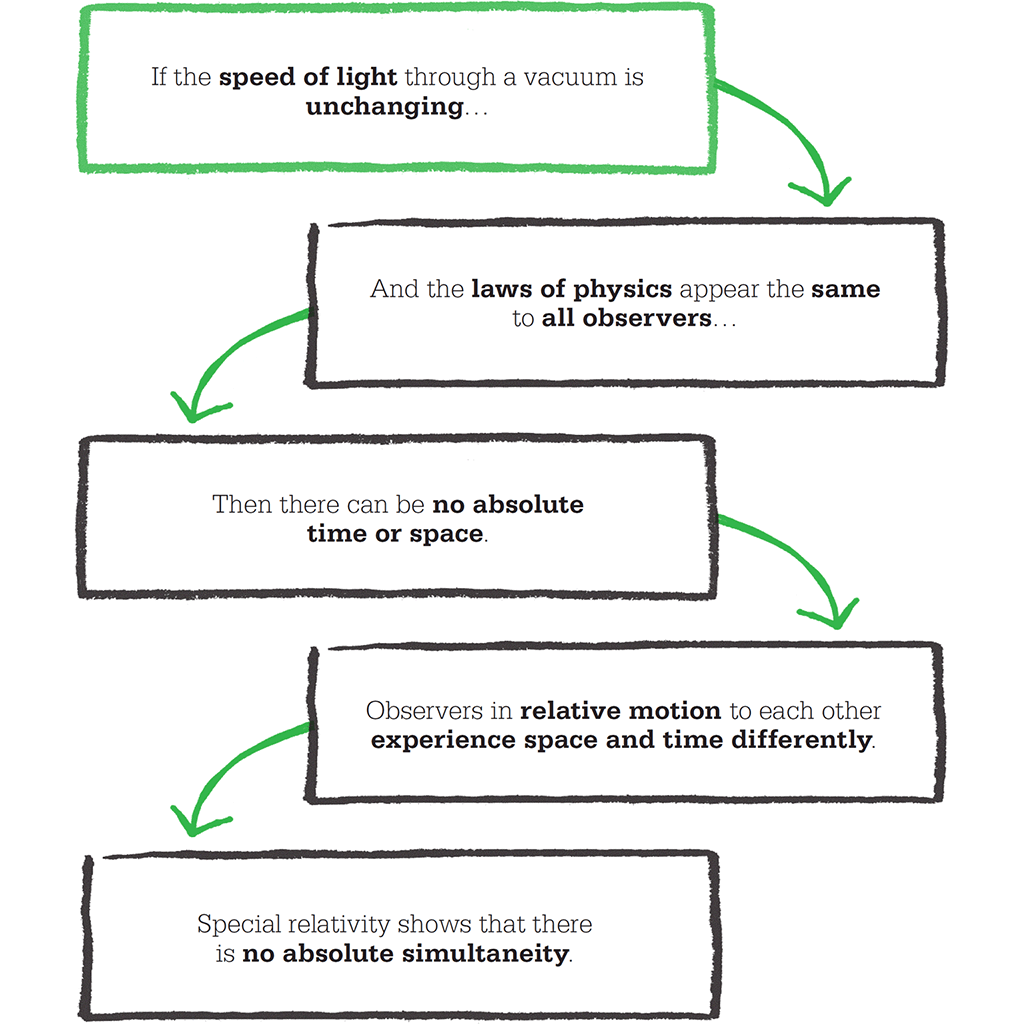
Quantizing light
The first of Einstein’s 1905 papers addressed a long-standing problem with the photoelectric effect. This phenomenon had been discovered by German physicist Heinrich Hertz in 1887. It involves metal electrodes producing a flow of electricity (that is, emitting electrons) when illuminated by certain wavelengths of radiation – typically ultraviolet light. The principle behind the emission is fairly easily described in modern terms (energy supplied by the radiation is absorbed by the outermost electrons in the metal’s surface atoms, allowing them to break free). The puzzle was that the same materials stubbornly refused to emit electrons when illuminated by longer wavelengths, no matter how intense the light source.
This was a problem for the classical understanding of light, which assumed that intensity, above all, governed the amount of energy being delivered by a light beam. Einstein’s paper, however, seized on the idea of “quantized light” recently developed by Max Planck. Einstein showed that if the beam of light is split into individual “light quanta” (what we would today call photons), then the energy carried by each quantum depends only on its wavelength – the shorter the wavelength, the higher the energy. If the photoelectric effect relies on interaction between an electron and a single photon, then it does not matter how many photons bombard the surface (that is, how intense the light source is) – if none of them carries sufficient energy, the electrons will not break free.
Einstein’s idea was rejected by leading figures of the day, including Planck, but his theory was shown to be correct by experiments conducted by American physicist Robert Millikan in 1919.
"The grand aim of all science is to cover the greatest number of empirical facts by logical deduction from the smallest number of hypotheses or axioms."
Albert Einstein
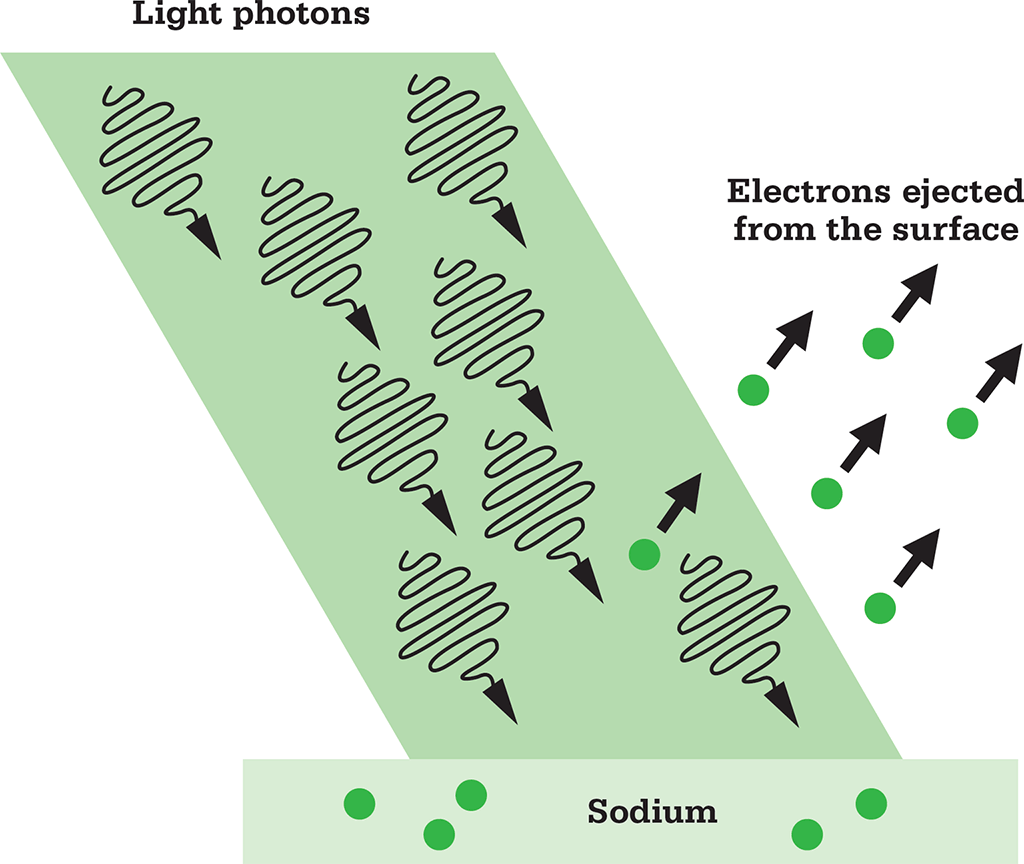
Electrons are ejected from the surface of sodium only by certain wavelengths of light. Einstein showed that this phenomenon can be explained if light travels as individual quanta, or photons. No matter how many of them there are, if the photons are of the wrong wavelength, they will not eject electrons.
Special relativity
Einstein’s greatest legacy was born in the third and fourth 1905 papers, which also involved an important reconceptualization of the true nature of light. Since the late 19th century, physicists had faced a crisis in their attempts to understand the speed of light. Its approximate value had been known and calculated with increasing accuracy since the 17th century, while James Clerk Maxwell’s equations had demonstrated that visible light was just one manifestation of a wider spectrum of electromagnetic waves, all of which must move through the Universe at a single speed.
Since light was understood to be a transverse wave, it was assumed that it propagated through a medium, just as water waves travel on the surface of a pond. The properties of this hypothetical substance, known as the “luminiferous aether”, would give rise to the observed properties of electromagnetic waves, and since they could not alter from place to place, they would provide an absolute standard of rest.
One expected consequence of the fixed aether was that the speed of light from distant objects should vary depending on the relative motion of source and observer. For example, the speed of light from a distant star should vary significantly depending on whether it was observed from one side of Earth’s orbit, as our planet moved away from it at 30km/s (20 miles/s), or on the opposite side, when the observer was moving towards it at a similar speed.
Measuring Earth’s motion through the aether became an obsession for late 19th-century physicists. Such a measurement was the only way of confirming the existence of this mysterious substance, and yet the proof remained elusive. However precise the measuring equipment, light always seemed to move at the same speed. In 1887, US physicists Albert Michelson and Edward Morley devised an ingenious experiment to measure the so-called “aether wind” with high precision, but once again found no evidence for its existence. The negative result of the Michelson-Morley experiment shook the belief in the aether’s existence, and similar results from attempts to repeat it over the following decades only intensified the sense of crisis.
Einstein’s third 1905 paper, On the Electrodynamics of Moving Bodies, confronted the problem head on. Special relativity, as his theory became known, was developed from an acceptance of two simple postulates – that light moves through a vacuum with a fixed speed that is independent of the motion of the source, and that the laws of physics should appear the same to observers in all “inertial” frames of reference – that is, those not subject to external forces such as acceleration. Einstein was undoubtedly helped in accepting the first bold postulate by his previous acceptance of the quantum nature of light – conceptually, light quanta are often imagined as tiny self-contained packets of electromagnetic energy, able to travel through the vacuum of space with particle-like properties while still maintaining their wave-like characteristics.
Accepting these two postulates, Einstein considered the consequences for the rest of physics, and mechanics in particular. In order for the laws of physics to behave in the same way in all inertial reference frames, they would necessarily appear to be different when looking from one frame to another. Only relative motion mattered, and when the relative motion between two separate frames of reference approached the speed of light (so-called “relativistic” speeds) strange things began to happen.
"Mass and energy are both but different manifestations of the same thing."
Albert Einstein
The Lorentz factor
Although Einstein’s paper made no formal references to other scientific
publications, it did mention the work of a handful of other contemporary
scientists, for Einstein was certainly not the only person working towards an
unorthodox solution to the aether crisis. Perhaps the most significant of these
was Dutch physicist Hendrik Lorentz, whose “Lorentz factor” lay at the heart of
Einstein’s description of physics close to the speed of light. It is defined
mathematically as: 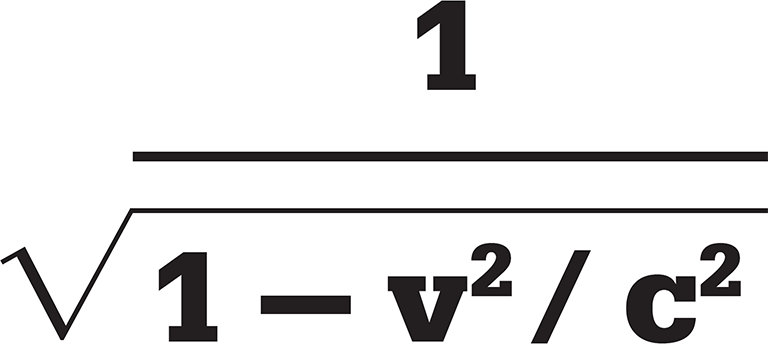 Lorentz developed this equation to describe the changes in
time and length measurements required in order to reconcile the Maxwell
equations of electromagnetism with the principle of relativity. It was crucial
to Einstein as it provided a term for transforming results as seen by one
observer to show what they look like to another observer who is in motion
relative to the first observer. In the term quoted above, v is the speed of one observer compared to the
other, and c is the speed of light. In most
situations, v will be very small compared to
c, so v2/c2 will be close to zero, and the Lorentz factor close
to 1, meaning that it makes almost no difference to calculations.
Lorentz developed this equation to describe the changes in
time and length measurements required in order to reconcile the Maxwell
equations of electromagnetism with the principle of relativity. It was crucial
to Einstein as it provided a term for transforming results as seen by one
observer to show what they look like to another observer who is in motion
relative to the first observer. In the term quoted above, v is the speed of one observer compared to the
other, and c is the speed of light. In most
situations, v will be very small compared to
c, so v2/c2 will be close to zero, and the Lorentz factor close
to 1, meaning that it makes almost no difference to calculations.
Lorentz’s work had been coolly received, largely because it could not be incorporated into standard aether theories. Einstein approached the problem from the other direction, showing that the Lorentz factor arose as an inevitable consequence of the principle of special relativity and re-examining the true meaning of measured time and distance intervals. An important result of this was the realization that events that appeared simultaneous for an observer in one reference frame were not necessarily so for someone in a different reference frame (a phenomenon known as the relativity of simultaneity). Einstein also showed how from the point of view of a distant observer, the length of moving objects in their direction of travel became compressed as they approached the speed of light, in accordance with a simple equation governed by the Lorentz factor. Even more strangely, time itself appears to run more slowly as measured from the observer’s reference frame.
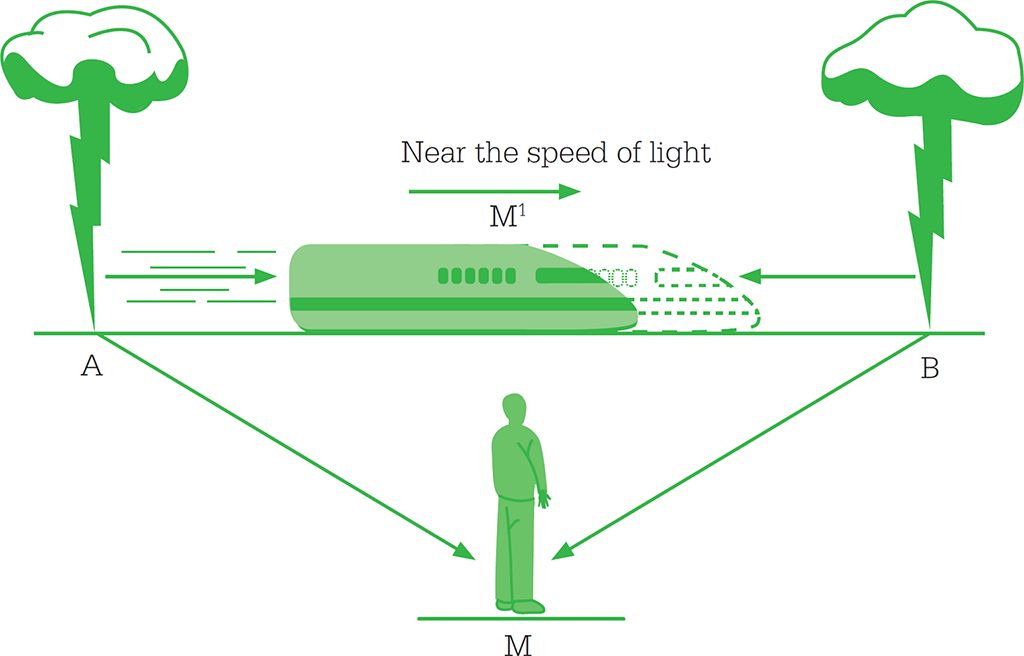
In Einstein’s thought experiment, for a stationary observer at point M, two lightning flashes at A and B occur simultaneously. However, to an observer at point M1 on a train moving at high speed away from A and towards B, the flash at B occurs before the flash at A.
Illustrating relativity
Einstein illustrated special relativity by asking us to consider two frames of reference in motion relative to one another: a moving train and the embankment next to it. Two flashes of lightning, at points A and B, appear to occur simultaneously to an observer standing on the embankment at a mid-point between them, M. An observer on the train is at a position M1 in a separate frame of reference. When the flashes occur, M1 may be passing right by M. However, by the time the light has reached the observer on the train, the train has moved towards point B and away from point A. As Einstein puts it, the observer is “riding ahead of the beam of light coming from A”. The observer on the train concludes that lightning strike B occurred before strike A. Einstein now insists that: “Unless we are told the reference-body to which the statement of time refers, there is no meaning in a statement of the time of an event.” Both time and position are relative concepts.
Mass-energy equivalence
The last of Einstein’s 1905 papers was called Does the Inertia of a Body Depend on its Energy Content? Its three brief pages expanded on an idea touched on in the previous paper – that the mass of a body is a measure of its energy. Here, Einstein demonstrated that if a body radiates away a certain amount of energy (E) in the form of electromagnetic radiation, its mass will diminish by an amount equivalent to E/c2. This equation is easily rewritten to show that the energy of a stationary particle within a particular reference frame is given by the equation E = mc2. This principle of “mass-energy equivalence” was to become a keystone of 20th century science, with applications that range from cosmology to nuclear physics.
Gravitation fields
Although Einstein’s papers in that annus mirabilis seemed too obscure at first to make much impression beyond the rarefied world of physics, it propelled him to fame within that community. Over the next few years, many scientists reached the conclusion that special relativity offered a better description of the Universe than the discredited aether theory, and devised experiments that demonstrated relativistic effects in action. Meanwhile, Einstein was already moving on to a new challenge, extending the principles that he had now established in order to consider “non-inertial” situations – those involving acceleration and deceleration.
As early as 1907, Einstein had hit upon the idea that a situation of “free fall” under the influence of gravity is equal to an inertial situation – the equivalence principle. In 1911, he realized that a stationary frame of reference influenced by a gravitational field is equivalent to one undergoing constant acceleration. Einstein illustrated this idea by imagining a person standing in a sealed lift in empty space. The lift is being accelerated in one direction by a rocket. The person feels a force pushing up from the floor, and pushes back against the floor with equal and opposite force following Newton’s Third Law. Einstein realized that the person in the lift would feel exactly as they would if they were standing still in a gravitational field.
In a lift undergoing constant acceleration, a beam of light fired at an angle perpendicular to the acceleration would be deflected onto a curved path, and Einstein reasoned that the same would occur in a gravitational field. It was this effect of gravity on light – known as gravitational lensing – that would first demonstrate general relativity.
Einstein considered what this said about the nature of gravity. In particular, he predicted that relativistic effects such as time dilation should occur in strong gravitational fields. The closer a clock is to a source of gravitation, the more slowly it will tick. This effect remained purely theoretical for many years, but has now been confirmed using atomic clocks.
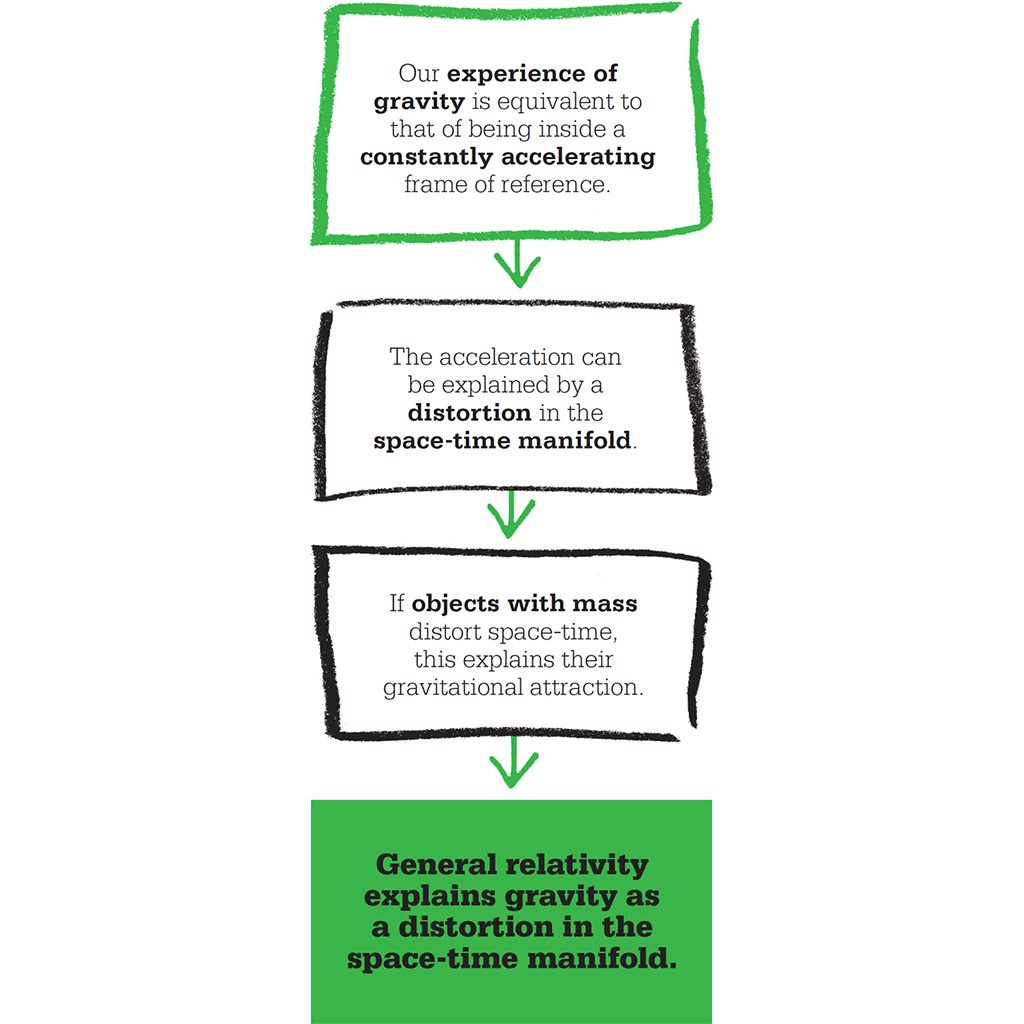
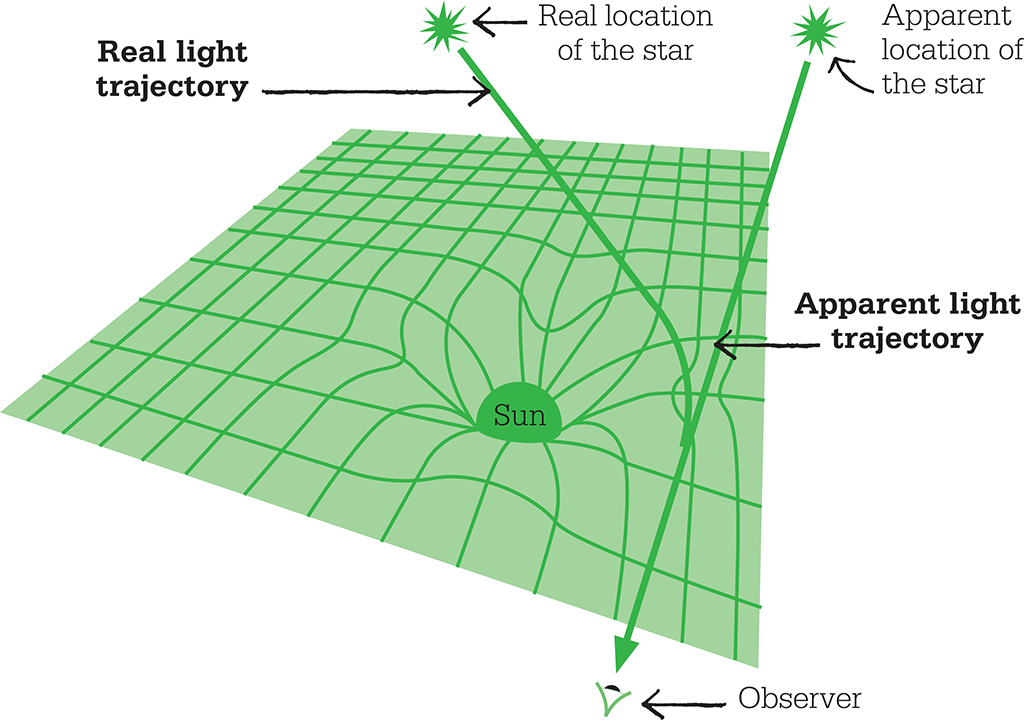
According to general relativity, mass creates a “gravitational well” in space-time. The idea can be visualized by representing three-dimensional space as a two-dimensional plane. The gravitational well of a massive object such as the Sun causes light to be deflected onto a curved path, altering the apparent position of distant stars to an observer – an effect called gravitational lensing.
Space-time manifold
Meanwhile, also in 1907, Einstein’s former tutor Hermann Minkowski had hit upon another important part of the puzzle. Considering the effective trade-offs between the dimensions of space and time involved in special relativity, he developed the idea of combining the three dimensions of space with one of time in a space-time manifold. In Minkowski’s interpretation, relativistic effects could be described in geometrical terms by considering distortions in the way that observers in relative motion observe the manifold in a different frame of reference.
In 1915, Einstein published his complete theory of general relativity. In its finished form, it was nothing less than a new description of the nature of space, time, matter, and gravity. Adopting Minkowski’s ideas, Einstein saw the “stuff of the Universe” as a space-time manifold that could be distorted thanks to relativistic motion, but could also be warped by the presence of large masses such as stars and planets in a way that was experienced as gravity. The equations that described the link between mass, distortion, and gravity were fiendishly complex, but Einstein used an approximation to solve a long-standing mystery – the way in which Mercury’s closest approach to the Sun (aphelion) precesses, or rotates, around the Sun much more quickly than predicted by Newtonian physics. General relativity solved the puzzle.
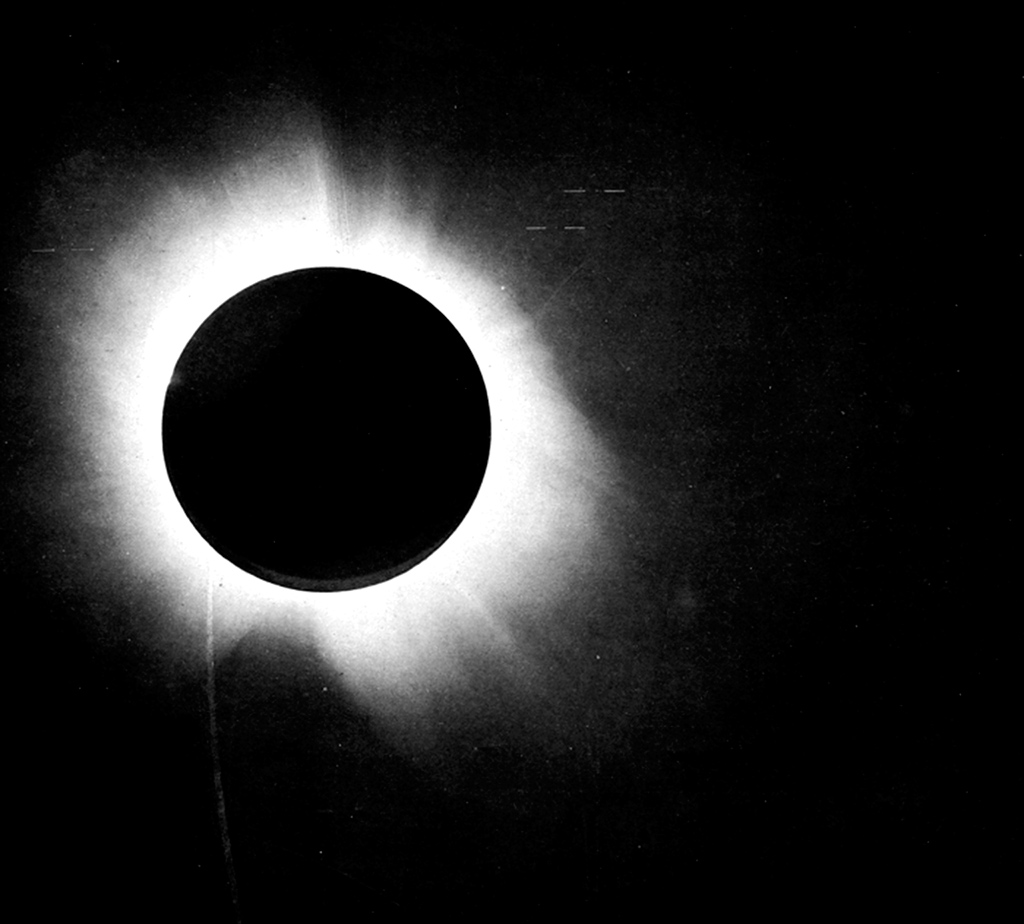
Arthur Eddington’s photographs of a solar eclipse in 1919 provided the first evidence for general relativity. Stars around the Sun appeared out of place, just as Einstein had predicted.
Gravitational lensing
Einstein published at a time when much of the world was swept up in World War I, and English-speaking scientists had other things on their minds. General relativity was a complex theory and might have languished in obscurity for many years had it not been for the interest of Arthur Eddington, a conscientious objector to the war, and, as it happened, Secretary of the Royal Astronomical Society.
Eddington became aware of Einstein’s work thanks to letters from Dutch physicist Willem de Sitter, and soon became its chief advocate in Britain. In 1919, a few months after the end of the war, Eddington led an expedition to the island of Príncipe, off the west coast of Africa, in order to test the theory of general relativity and its prediction of gravitational lensing in the most spectacular circumstances. Einstein had predicted as early as 1911 that a total solar eclipse would allow the effects of gravitational lensing to be seen, in the form of apparently out-of-place stars around the eclipsed disc (a result of their light being deflected as it passed through the warped space-time around the Sun). Eddington’s expedition delivered both impressive images of the solar eclipse and convincing proof of Einstein’s theory. When published the following year, they proved a worldwide sensation, propelling Einstein to global fame and ensuring that our ideas about the nature of the Universe would never be the same again.
ALBERT EINSTEIN
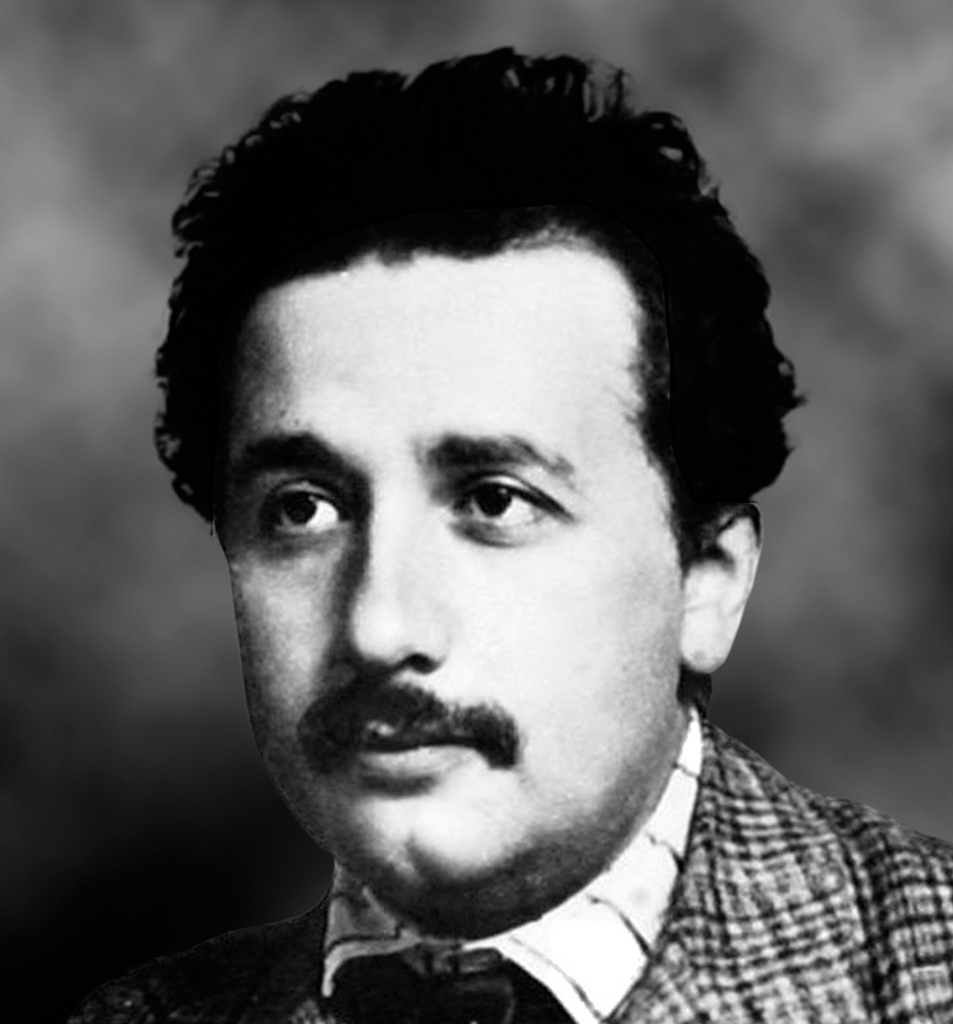
Born in the southern German city of Ulm in 1879, Einstein had a somewhat bumpy secondary education, eventually training at Zurich Polytechnic to become a mathematics teacher. After failing to find teaching work, he took a job at the Swiss Patent Office in Bern, where he had plenty of spare time to develop the papers published in 1905. He put his success in this work down to the fact that he had never lost his childlike sense of wonder.
Following the demonstration of general relativity, Einstein was propelled to global stardom. He continued to explore the implications of his earlier work, contributing to innovations in quantum theory. In 1933, fearing the rise of the Nazi party, Einstein elected not to return to Germany from a foreign tour, settling eventually at Princeton University in the United States.
Key works
1905 On a Heuristic Viewpoint Concerning the Production and Transformation of Light
1915 The Field Equations of Gravitation
See also: Christiaan Huygens • Isaac Newton • James Clerk Maxwell • Max Planck • Erwin Schrödinger • Edwin Hubble • Georges Lemaître